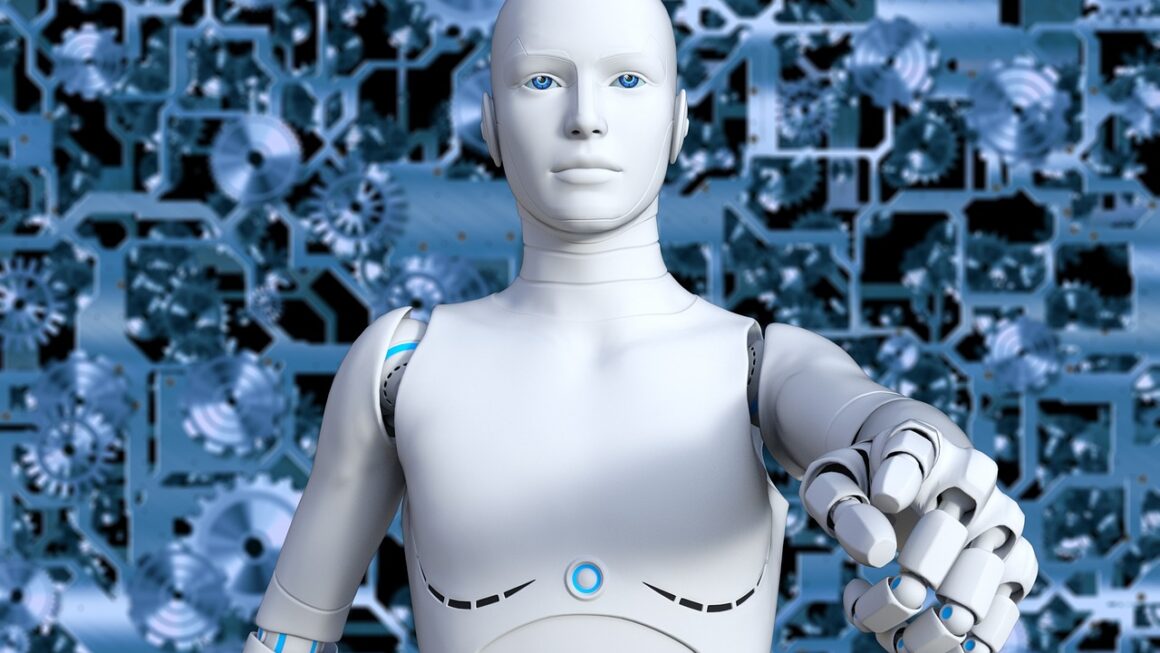The relentless pace of technological advancement has brought us to an era defined by Artificial Intelligence (AI). From self-driving cars to personalized medicine, AI innovation is reshaping industries and redefining the possibilities of what technology can achieve. This transformative force is not just about automation; it’s about creating intelligent systems that can learn, adapt, and solve complex problems in ways previously unimaginable. In this blog post, we will explore the exciting frontiers of AI innovation, examining its key areas, practical applications, and the impact it has on our world.
The Expanding Landscape of AI Technologies
AI is no longer a monolithic entity but a diverse ecosystem of specialized technologies, each with its unique strengths and applications. Understanding this landscape is crucial for navigating the world of AI innovation.
Machine Learning: The Foundation of AI
Machine learning (ML) is the core of many AI applications. It enables systems to learn from data without explicit programming, allowing them to improve their performance over time.
- Types of Machine Learning:
Supervised Learning: Training a model on labeled data to predict outcomes. (e.g., predicting customer churn based on past behavior).
Unsupervised Learning: Discovering patterns in unlabeled data. (e.g., customer segmentation for targeted marketing).
Reinforcement Learning: Training an agent to make decisions in an environment to maximize a reward. (e.g., training robots to perform tasks).
- Practical Example: A bank using supervised learning to detect fraudulent transactions by analyzing historical data and identifying suspicious patterns.
Natural Language Processing (NLP): Bridging the Communication Gap
NLP focuses on enabling computers to understand, interpret, and generate human language. This field is crucial for applications like chatbots, language translation, and sentiment analysis.
- Key Applications:
Chatbots: Providing instant customer support and answering queries.
Sentiment Analysis: Gauging public opinion from social media and reviews.
Language Translation: Breaking down language barriers for global communication.
Voice Assistants: Enabling hands-free control of devices and information access. (e.g. Siri, Alexa, Google Assistant)
- Practical Example: A company using NLP to analyze customer reviews and identify areas where their products or services need improvement. They can understand the nuances of the customer feedback, something a simple keyword search would miss.
Computer Vision: Giving Machines the Power to See
Computer vision empowers machines to “see” and interpret images and videos. This technology is revolutionizing industries from healthcare to manufacturing.
- Applications in Various Sectors:
Healthcare: Assisting in medical image analysis for faster and more accurate diagnoses.
Manufacturing: Inspecting products for defects and automating quality control processes.
Autonomous Vehicles: Enabling vehicles to perceive their surroundings and navigate safely.
Security and Surveillance: Enhancing security systems with facial recognition and object detection.
- Practical Example: A hospital using computer vision to analyze X-rays and CT scans, helping radiologists detect anomalies and improve diagnostic accuracy. This can lead to faster diagnosis and treatment.
AI in Business: Transforming Operations and Strategies
AI is rapidly changing the way businesses operate, from streamlining processes to enhancing customer experiences and driving innovation.
Optimizing Business Processes
AI can automate repetitive tasks, freeing up human employees to focus on more strategic and creative work.
- Benefits of AI Automation:
Increased efficiency and productivity.
Reduced operational costs.
Improved accuracy and consistency.
Enhanced data analysis and insights.
- Practical Example: A supply chain using AI to predict demand, optimize inventory levels, and route shipments efficiently, reducing costs and improving customer satisfaction.
Enhancing Customer Experience
AI-powered solutions can personalize customer interactions, improve customer service, and create more engaging experiences.
- AI-Driven Customer Experience Enhancements:
Personalized recommendations based on customer preferences.
Proactive customer support through chatbots and virtual assistants.
Targeted marketing campaigns based on customer behavior and demographics.
Improved customer retention through personalized engagement strategies.
- Practical Example: An e-commerce company using AI to recommend products to customers based on their browsing history and purchase patterns, increasing sales and customer satisfaction.
Data-Driven Decision Making
AI can analyze vast amounts of data to identify trends, patterns, and insights that can inform strategic decision-making.
- AI’s Role in Data Analysis:
Identifying hidden patterns and correlations in data.
Predicting future trends and outcomes.
Optimizing resource allocation and investment decisions.
Providing real-time insights for agile decision-making.
- Practical Example: A marketing team using AI to analyze customer data and identify the most effective channels and messaging for their campaigns, improving ROI and customer engagement.
AI in Healthcare: Revolutionizing Patient Care
AI is poised to revolutionize healthcare, from diagnostics and treatment to drug discovery and patient monitoring.
AI-Powered Diagnostics
AI can assist doctors in diagnosing diseases more quickly and accurately, leading to earlier and more effective treatment.
- Applications in Diagnostics:
Analyzing medical images to detect anomalies.
Predicting disease risk based on patient data.
Automating the interpretation of lab results.
Improving the accuracy of diagnoses.
- Practical Example: AI-powered software analyzing mammograms to detect early signs of breast cancer, allowing for earlier intervention and improved patient outcomes.
Personalized Treatment Plans
AI can analyze patient data to develop personalized treatment plans that are tailored to their individual needs and characteristics.
- Benefits of Personalized Treatment:
More effective treatments with fewer side effects.
Improved patient outcomes and quality of life.
Reduced healthcare costs.
Better adherence to treatment plans.
- Practical Example: AI analyzing a cancer patient’s genetic profile to identify the most effective chemotherapy drugs for their specific type of cancer.
Drug Discovery and Development
AI can accelerate the drug discovery process, reducing the time and cost of bringing new drugs to market.
- AI’s Impact on Drug Discovery:
Identifying potential drug targets.
Predicting the efficacy and safety of new drugs.
Accelerating clinical trials.
Reducing the cost of drug development.
- Practical Example: Researchers using AI to analyze vast databases of chemical compounds and biological data to identify potential drug candidates for treating Alzheimer’s disease.
Ethical Considerations and the Future of AI
As AI becomes more prevalent, it’s crucial to address the ethical considerations and ensure that AI is used responsibly and for the benefit of society.
Addressing Bias in AI
AI algorithms can inherit biases from the data they are trained on, leading to unfair or discriminatory outcomes.
- Strategies for Mitigating Bias:
Ensuring diverse and representative training data.
Developing bias detection and mitigation techniques.
Establishing ethical guidelines for AI development and deployment.
Promoting transparency and accountability in AI systems.
- Practical Example: Regularly auditing AI-powered hiring tools for gender and racial bias and taking steps to correct any disparities.
Ensuring Data Privacy and Security
AI systems often rely on large amounts of personal data, raising concerns about data privacy and security.
- Measures for Protecting Data Privacy:
Implementing robust data encryption and security protocols.
Adhering to data privacy regulations (e.g., GDPR, CCPA).
Obtaining informed consent from individuals before collecting and using their data.
Providing individuals with control over their data.
- Practical Example: Implementing anonymization techniques to protect patient data while still allowing AI to be used for research and diagnostics.
The Future of AI
AI is expected to continue to evolve at a rapid pace, with new technologies and applications emerging constantly.
- Emerging Trends in AI:
Explainable AI (XAI): Making AI decision-making more transparent and understandable.
Edge AI: Processing data locally on devices, reducing latency and improving privacy.
Generative AI: Creating new content, such as images, text, and code.
* Quantum AI: Leveraging quantum computing to solve complex AI problems.
Conclusion
AI innovation is transforming industries, revolutionizing healthcare, and reshaping our world. By understanding the key areas of AI, addressing the ethical considerations, and staying abreast of the latest trends, we can harness the power of AI to create a better future for all. The journey of AI is just beginning, and the possibilities are limitless. Embracing this transformative technology responsibly and ethically will unlock unprecedented opportunities for innovation and progress.




